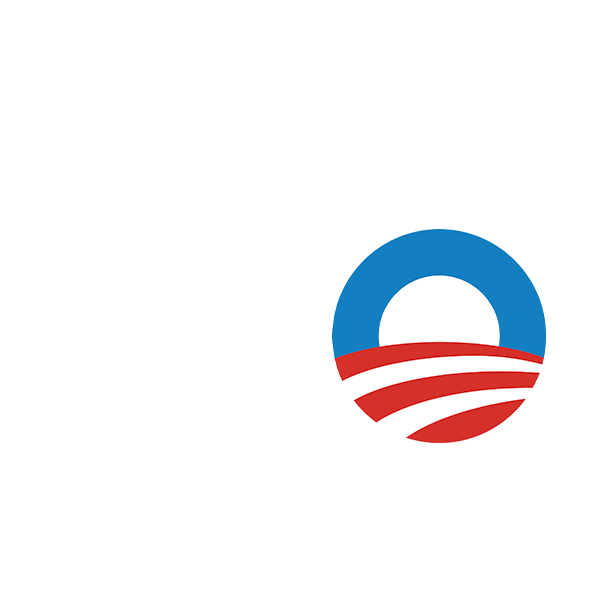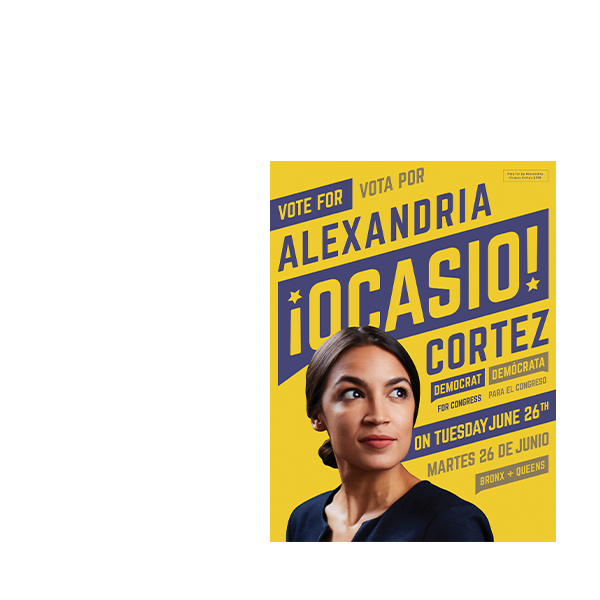Creative and brand strategy
The Art of the
Political Logo
Noah Whitford serves as vice president and design director at MissionWired. Since joining the team in 2016, he’s steered creative visual strategy for a wide range of political and nonprofit partners, including national committees, Senate candidates, and presidential races like the 2020 Biden-Harris campaign.
Political logo design may look simple, but there’s a lot of thought that goes into each decision. We’re excited to share Noah’s analysis of some of recent political history’s most noteworthy campaign logos.
The key to any successful political logo is not only a finished product that represents the candidate or cause it stands for but one that also welcomes and represents the constituency that the candidate or cause seeks to serve. The audience for these designs needs to feel a familiarity, a comfort and even a sense of security in what they see.
The question then becomes concerned with how you create something new and fresh within the narrow strictures that political design often requires? If you’re playing in the usual sandbox, you’ve got three, maybe four colors to work with (you can guess which ones they are) and a handful of symbols (stars, stripes, arrows, etc.).
Here, I’ll talk about three political logos that broke the mold – for better or for worse – and what they say about the rules of political design.

The Obama “O”
The best place to begin with political design in the digital era is with Obama’s iconic “O” logo. Historically, candidate names have been scrawled out in big, bold, uncomplicated font to be easily read on yard signs. The Obama team kept the big, bold letters but – reflective of a campaign building a groundbreaking digital presence in fundraising and social media – also designed a mark for the profile-picture age.
Created by Sender LLC for Obama’s 2008 run, the design wisely took the first letter of Obama’s last name and turned it into a sunrise, a symbol of hope for a country in the throes of two wars and a historic financial crisis. This wasn’t a typeset yard sign; this was a true and proper logo. You didn’t need to read his full name to know who this “O” was referencing.
It was so successful that it withstood the shift away from 3D to flat design between Obama’s 2008 and 2012 campaigns and even serves as the logo for The Obama Foundation, nearly 15 years after its debut. Between the symbol and the Gotham font craze it ushered in, the Obama campaign fundamentally changed design for Democratic politicians moving forward.

The Jeb “!”
Ah, Jeb Bush’s logo, with its oft-derided punctuation. Much as I don’t believe that one gaffe can single-handedly sink a campaign, I don’t believe a design choice can either. However, these moments can become shorthand for everything people dislike about a candidate, and that can be disastrous.
This is appropriately dubbed the “Please Clap” of political logos: an attempt to skip ahead to first place, and feigning broad enthusiasm for a campaign that never really got off the ground. The feeling that the Bush campaign was asking you to yell a monosyllabic “Jeb!” was inescapably cringe-inducing.

The AOC Poster
We’re now going to talk about an exclamation point that did work. In my humble opinion, Alexandria Ocasio-Cortez’s branding for her 2018 congressional run is the most important development in political design in a long, long time. I knew the tide had shifted when, instead of receiving veiled requests to deliver the Obama logo, I was explicitly asked to create “something like AOC.”
Generally, if you’re branding a Democratic cause and want to use an arrow, you’re going to run into one major problem: if it’s a forward arrow, it’s going to the right. If you try to flip it to go to the left, you’re going backwards. I suppose you could go up, but… I digress. The team behind the logo – Tandem Design – solved the arrow problem by tilting the typography upwards, creating the optimism and forward momentum that often elude political logos. The New York Times even wrote a piece about how this trend exploded in the next cycle. It’s also notable for using off-shades to create a warmer patriotic color palette, and it inventively incorporates Spanish to be a truly bilingual piece of campaign literature.
Rooted in historical protest signs (and even the Obama “HOPE” poster) AOC’s campaign art shows that there’s still room to create effective, innovative design in the political arena.
Want to know more about the creative tactics and strategies that help fundraising campaigns drive strong results? Learn how to use GIFs and moving visuals to increase engagement and drive results – or read our Q&A with our creative leadership discussing how we use data to inform creative strategy. Subscribe to our newsletter, Recurring, to stay up to date on the latest fundraising trends and updates.
Next insight
